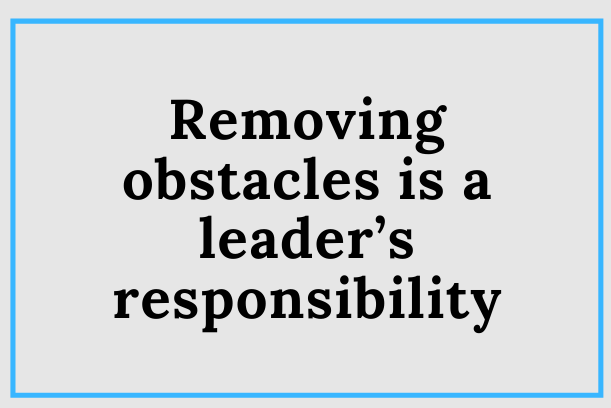Nov07

FCRQ171 Leadership Learning!
On this day, November 7th, 1917, the Bolsheviks stormed the Winter Palace in Petrograd, igniting the Russian Revolution. The storming of the Winter Palace marked the culmination of months of growing discontent and revolutionary fervour that had been building since the February Revolution, which had already toppled the Romanov dynasty and ended centuries of imperial rule. In its place, the Provisional Government—led by Kerensky—assumed power but failed to earn the trust of the population, especially as it continued Russia’s deeply unpopular war against Germany. Petrograd, later renamed Leningrad and now known as Saint Petersburg, was a city in turmoil, symbolising both imperial decline and revolutionary energy. The Winter Palace, an opulent baroque structure that had served as the official residence of Russian tsars, stood as the ultimate symbol of imperial power and authority. By October 1917, following the Julian calendar then in use in Russia, the palace housed the increasingly isolated Provisional Government. Vladimir Lenin and the Bolshevik Party, having returned from exile and steadily gained support through promises of peace, land, and bread, recognised that the moment for decisive action had arrived. The actual assault on the Winter Palace began in the evening and continued into the early morning hours. Contrary to popular dramatisations, the takeover involved relatively little bloodshed. Revolutionaryforces, including Red Guards, soldiers, and sailors from the Kronstadt naval base, gradually surrounded the palace. The cruiser Aurora, anchored on the Neva River, fired blank shots to signal the beginning of the assault, though this symbolic gesture has often been mythologised in subsequent retellings. Inside the palace, the Provisional Government's ministers found themselves virtually defenceless. Most military units had either defected to the Bolsheviks or remained neutral. The Women's Battalion and a small number of military cadets provided token resistance, but the outcome was never in doubt. By the early morning of November 8th, the ministers were arrested, and Bolshevik forces controlled the building. Kerensky had already fled the city in a desperate attempt to rally loyal troops. The fall of the Winter Palace represented far more than a change in government. It signalled the end of centuries of imperial rule and the beginning of the world's first socialist state. The Bolsheviks moved swiftly to consolidate power, withdrawing Russia from the war, redistributing land to peasants, and nationalising industry. These actions set in motion a cascade of consequences that would reshape global politics throughout the twentieth century. The revolution's impact extended well beyond Russia's borders. It inspired socialist and communist movements worldwide, contributed to the ideological divisions that characterised the Cold War, and fundamentally altered how people conceived of political and economic organisation. These events demonstrated how quickly established institutions could crumble when they lost legitimacy and connection with the populations they governed. The storming of the Winter Palace reveals profound truths about systemic transformation. When institutional structures lose their foundation of support and legitimacy, even the most imposing edifices of power become vulnerable. The Provisional Government's failure stemmed not from lack of resources or formal authority, but from its inability to address the fundamental concerns of those it sought to govern. The revolution succeeded because it channelled widespread dissatisfaction into coordinated action at precisely the moment when existing structures were most fragile.
Change Leadership Lessons: These historical events provide profound insights for today's change leaders who face similar challenges of legitimacy, timing, and transformation. The lessons from the storming of the Winter Palace extend far beyond revolutionary politics; they reveal enduring truths about how leaders must understand, harness, and direct dissatisfaction to achieve meaningful transformation. Leaders of change recognise that organisations collapse when formal authority becomes disconnected from the legitimacy required to maintain stakeholder confidence and support. They must recognise fleeting opportunity windows and act decisively rather than delaying for conditions that may never improve. Change leaders understand that simple, tangible messaging addressing immediate concerns generates broader support than complex explanations or theoretical frameworks ever achieve. They deploy strategic symbolic actions to shift collective perception, making transformation feel inevitable and building confidence that accelerates adoption throughout organisations. Leaders of change ensure transformation addresses all critical elements simultaneously to prevent partial implementation that enables resistance to reverse progress already made. Change Leaders Harness Existing Dissatisfaction.
“Change leaders succeed when they channel existing dissatisfaction into coordinated action at precisely the moment when outdated structures lose their legitimacy and new possibilities emerge.”
Application. Change Leadership Responsibility 1 - Articulate a Change Vision: The storming of the Winter Palace illustrates that effective change leadership begins by channelling dissatisfaction into a clear and compelling vision that unites and motivates stakeholders. The Bolsheviks' simple yet powerful message during the October Revolution of 'Peace, Land, and Bread' resonated deeply because it addressed the population's immediate needs and frustrations, transforming discontent into purposeful collective action. In contrast, the Provisional Government’s inability to articulate a coherent and relatable vision led to the erosion of its legitimacy and authority. Change leaders must recognise that when dissatisfaction is widespread, silence or ambiguity invites disengagement and resistance. By clearly articulating a vision that acknowledges current realities and offers tangible improvement, they can convert frustration into belief and momentum. Great change leaders convert disillusionment into shared aspiration for a better future, guiding transformation with clarity, purpose, and emotional resonance.
Final Thoughts: Today's leaders face similar challenges of legitimacy and timing, amplified by technological disruption and AI-driven transformation that can rapidly erode outdated structures. Change leaders who recognise and channel existing dissatisfaction into clear, coordinated action will drive meaningful change, whilst those who ignore disconnection will watch their authority collapse. Leadership effectiveness now depends on sensing these shifts early and acting decisively before windows of opportunity close.
Further Reading: Change Management Leadership - Leadership of Change® Volume 4.
Peter F. Gallagher consults, speaks, and writes on Leadership of Change®. He works exclusively with boards, CEOs, and senior leadership teams to prepare and align them to effectively and proactively lead their organisations through change and transformation.
For insights on navigating organisational change, feel free to reach out at Peter.gallagher@a2B.consulting.
#LeadershipofChange #Leadership #ChangeLeadership #GlobalGurus #ChangeManagement #Bolsheviks #WinterPalace #VladimirLenin #Leningrad #SaintPetersburg #Petrograd #RussianRevolution #AlexanderKerensky
For further reading please visit our websites: https://www.a2b.consulting https://www.peterfgallagher.com Amazon.com: Peter F Gallagher: Books, Biography, Blog, Audiobooks, Kindle
Leadership of Change® Body of Knowledge Volumes: Change Management Body of Knowledge (CMBoK) Books: Volumes 1, 2, 3, 4, 5, 6, 7, 8, 9, 10, A, B, C, D & E available on both Amazon and Google Play:
~ Leadership of Change® Volume 1 - Change Management Fables
~ Leadership of Change® Volume 2 - Change Management Pocket Guide
~ Leadership of Change® Volume 3 - Change Management Handbook
~ Leadership of Change® Volume 4 - Change Management Leadership
~ Leadership of Change® Volume 5 - Change Management Adoption
~ Leadership of Change® Volume 6 - Change Management Behaviour
~ Leadership of Change® Volume 7 - Change Management Sponsorship
~ Leadership of Change® Volume 8 - Change Management Charade
~ Leadership of Change® Volume 9 - Change Management Insanity
~ Leadership of Change® Volume 10 - Change Management Dilenttante
~ Leadership of Change® Volume A - Change Management Gamification - Leadership
~ Leadership of Change® Volume B - Change Management Gamification - Adoption
Keywords: Leadership, Change Management, Business Strategy
 From Recognition to Responsibility: Building a Portal for a Planetary Civilization
From Recognition to Responsibility: Building a Portal for a Planetary Civilization Are You Setting The Direction?
Are You Setting The Direction? There Seems to be Some Confusion: Exit vs Succession
There Seems to be Some Confusion: Exit vs Succession  When Strategy Fails, Look Inside
When Strategy Fails, Look Inside The Modular Ascent: Integrating Gemini 3, V-JEPA, and World Models for Aviation AGI
The Modular Ascent: Integrating Gemini 3, V-JEPA, and World Models for Aviation AGI